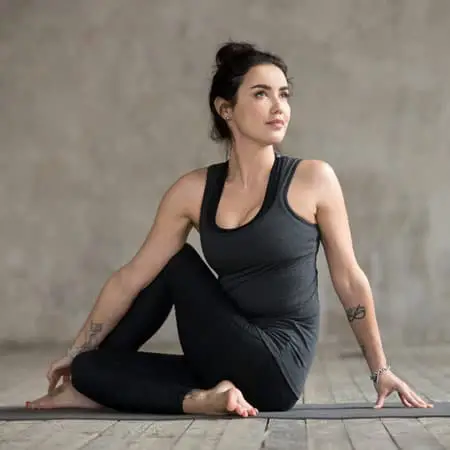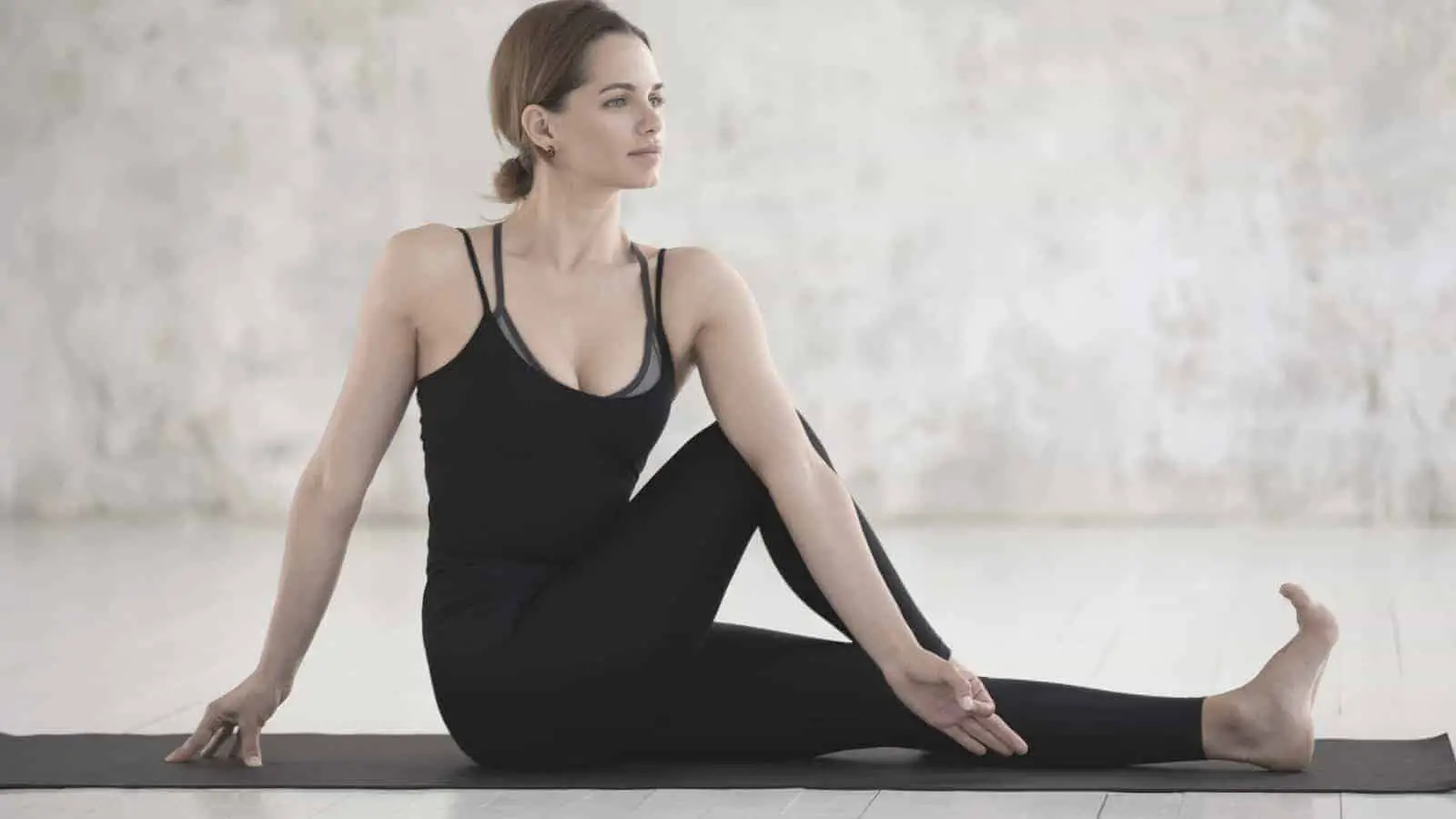In yoga, there are a variety of twisting postures that benefit the external and internal body. Externally, engaging in twisting yoga positions can increase your flexibility, strength and mobility. In everyday situations, twisting your upper body may be taken for granted. Your torso is constantly in motion: bending forward and back, twisting side to side. If stiff or sore, it can be a challenge to move your upper body in a functional way. Rotations are limited and bending to the side could potentially be painful. Yoga postures can release the tension in the core muscles so that your movement can feel free again.
Internally, practicing yoga twists can improve digestion. Feeling full or bloated can be quite uncomfortable and a result of a poor digestive process. What is needed to regain proper functioning of the digestive system is efficient blood flow. Certain yoga postures, like twists, will not only help blood flow to this region of the body, but also provide a gentle massage to your internal organs. This attention to your body will facilitate a more operative digestive process.
Improve digestion with 5 simple asanas
Passive Spinal Twist
Starting with a mild rotation in the torso can begin the process of building strength in the core system and stimulate digestion. This passive spinal twist will be a good warm up.
Begin by lying on your stomach propped up on your forearms. Press up to your knees so you can slide your left knee underneath you toward the right edge of your mat. Keep your knee bent at 90 degrees and set your left hip on the floor. Simply bend your right knee to 90 degrees. (Your knee and foot foot will point toward the left side of your mat.) Stay on your elbows and face forward and maintain a good length in your spine. The crossing of the legs creates a mild rotation in the spine, primarily in the cervical spine (mid-back region). Hold this posture while it massages the spine and the surrounding supportive muscles. This position will also create some release in the hips. Take 10 slow, deep breaths. When you’re complete with this first side, perform the rotation on the other side.
Half Lord of the Fishes (Ardha Matsyendrasana)

This next yoga rotation is more active in nature. It is a classic yoga posture called Half Lord of the Fishes. Start in a seated posture with your legs extending out in front of you. Bend your right knee and cross that foot over the extended left leg. Rotate your torso to the right side. Hook your left elbow over the bent knee. Keep this arm and hand active; spread open your palm as if you are waving. Use your right hand behind you on the floor to maintain length in the spine and to stabilize your pose. Inhale to create more length in the torso, exhale to gently revolve to the right. Hold for 10 slow, long breaths. It is ok if both hips do not touch the floor at the same time. This might suggest some tightness in the hips. This pose, though, will encourage release in this hindered area. After holding the posture on this first side, return to center, then practice this active twist on the other side.
Kneeling Lunge with a Twist
This next active twisting posture will continue the strengthening along your torso and enhance the blood flow in your system to activate the digestive system.
Start in a kneeling position with hips aligned over your knees. Step your right foot forward so that you’re still kneeling on your left side. Inhale to extend your left arm in the air to create length in your upper body. As you exhale, rotate your torso to the right, bend forward slightly, and brace your left elbow on the outer portion of your bent right knee. Inhale to create more length in your spine. Exhale to rotate deeper until you’ve reached the desired sensation. (You can place your right hand on your low back to stabilize yourself.) Hold here for 10 slow, deep breaths. Unwind when you are complete and hold for a moment in a neutral position. This allows your organs and spine to realign before you engage the twist on the other side.
Thread the Needle yoga posture (Parsva Balasana)
This is a twisting posture that relieves tension in several parts of your body: back, shoulders, and hips. This is good because these are areas in which we hold a lot of muscle tension.
Start Parsva Balasana on your hands and knees on a yoga mat. Be sure your knees are directly underneath your hips and your wrists underneath your shoulders to begin. Next, step your right hand in a bit so that it is directly under your chest. Inhale to take your left arm out to the side (like you’re spreading your wings). Exhale and guide this lifted arm across your body underneath you and place it on the floor. The effect simulates “threading a needle.” Your entire left arm will be on the floor between your right hand and right knee. This will rotate of your whole torso which positively creates a stretch along the muscles that support your spine.
For an additional shoulder stretch, reach your right hand over head toward the front of the room. This will lengthen the deltoid muscles (your shoulder muscle) as well as your obliques (the large side muscles of your back.) You can also add some muscle release to your right hip by pushing it slightly toward your extended left hand that is on the floor. For an effective release of tension, hold this posture for 10 slow breaths. When you are complete, replace your right hand on the floor underneath you to lift yourself up and unwind from the pose. Return to your table top posture, then perform the pose on the other side.
Spinal Twist yoga pose (Supta Matsyendrasana)
Spinal Twist yoga pose is good for your back and hips. Begin by lying on your back and hug your knees toward your torso. Slowly take your knees over to the left side while extending your right arm to the right side of the room. This will create a twist in your back. Try to rest your entire upper back body on the floor to experience the full rotation. Not only will you feel this stretch along your back, but also in your right outer hip. As with the other twisting pose, hold this one for 10 slow deep breaths. When complete, return to center, then practice the rotation on the other side.
Conclusion
It is important to hold these twisting yoga postures for a significant amount of time so that the body can respond appropriately. By holding still, you are allowing the tight muscles to gently release. By breathing with intention, you are generating efficient blood and oxygen movement to this area of the body. Practice these asanas to build the desired strength and heighten the efficiency of internal bodily functions.








